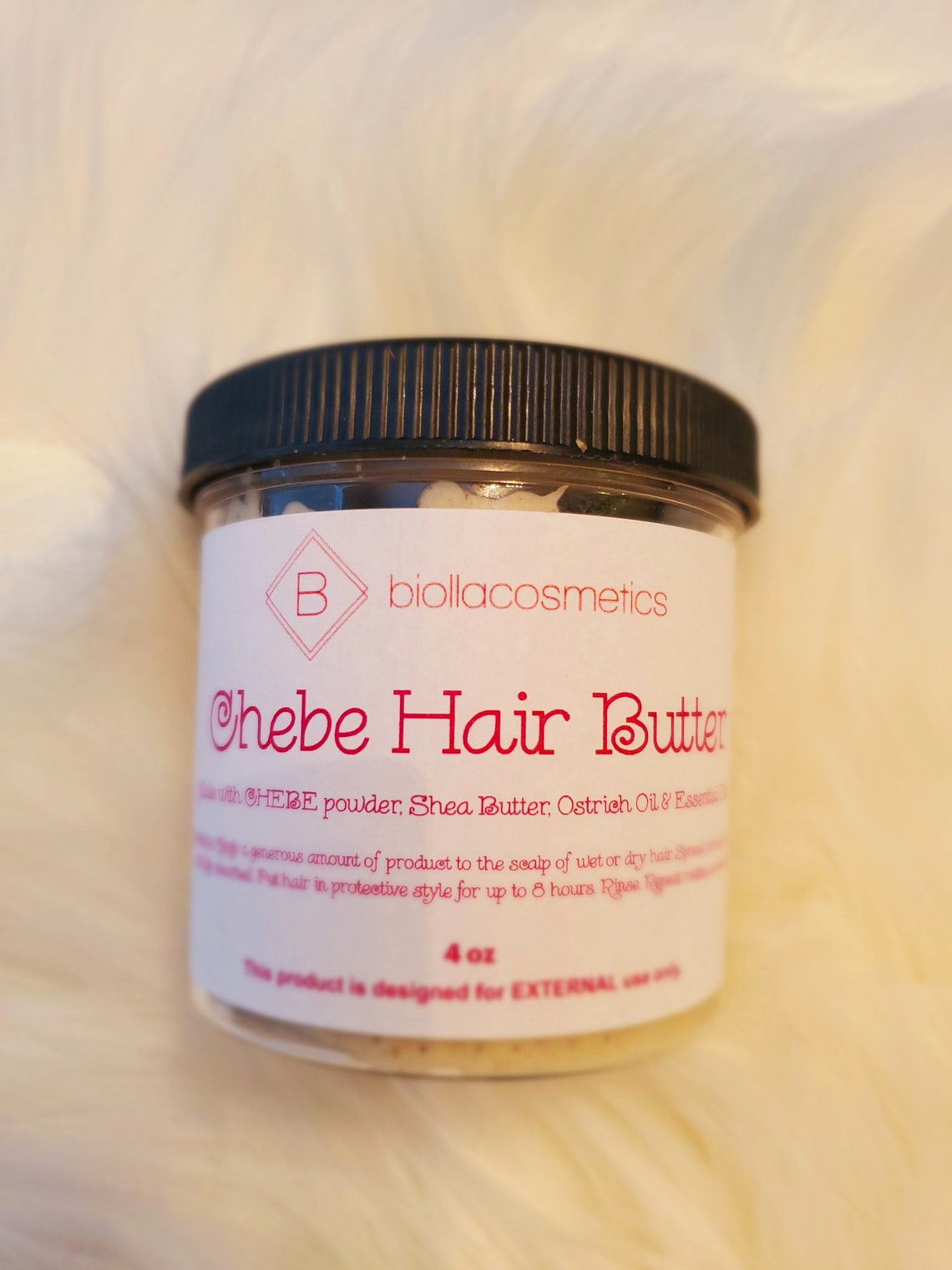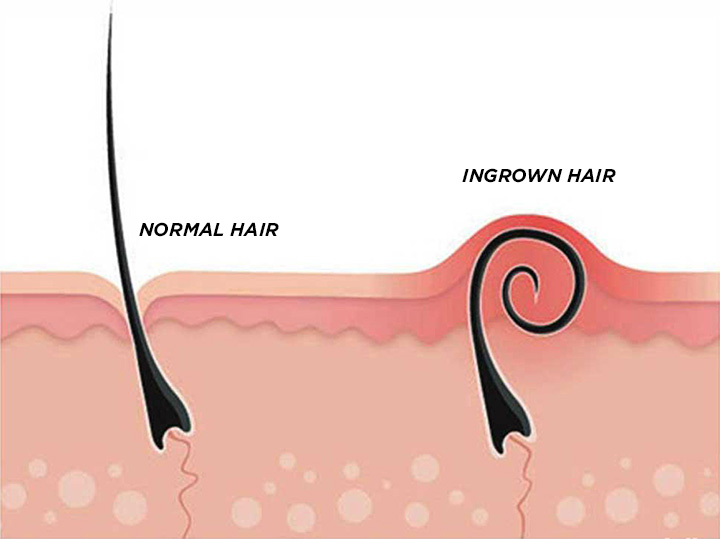Table Of Content

“It is an intense moment of sharing, of transmitting know-how and culture,” says Nsibentum. "Chebe is a shrub that grows in the mountain ranges of my country Chad," explains Salwa Petersen, founder of her eponymous beauty brand that's well-known for its signature Chébé Du Tchad Hair Cream. "Chadian women discovered millennia ago that the seeds have powerful hair strengthening properties." From the kinkiest coils to loose waves, we're celebrating natural hair in its many forms by sharing expert tips for styling, maintenance, and haircare. Depending on how you use it, chebe powder can exfoliate the scalp—the powder has a gentle, grainy texture, so you could use those granules in a DIY scalp scrub. "That allows for a refreshing feeling on the scalp," says Martey-Ochola.

Salwa Petersen Chébé du Tchad Hair Cream
Restore and protect your hair with our lightweight Chebe leave-in conditioner. Cleanse and invigorate your hair while harnessing the benefits of Chebe infusion. Contains anti-inflammatory properties and neutralizes the PH of the hair follicles, which prevents scalp issues and helps to soften and detangle hair. Prevents the build-up of fungus and bacteria, which helps to reduce dandruff and scalp dryness while keeping it well moisturized.
Helps hair retain length.
To uncover the facts and applications of the super powder, we turned to three experts to give us the full rundown. “Our women have very, very old hair rituals, and some can be traced back thousands of years through old rock art,” says Salwa Petersen, founder of a new eponymous haircare brand. The prehistoric rock paintings she’s referring to depict fashion shows, hair stylings, and rituals that revolve around chébé, a plant that’s strengthened and moisturized the hair of Chadian women for millennia. Petersen, a French and Chadian dual citizen and industry vet who’s formulated best-selling products for L’Oréal, thought someone should share the ancient practice with the world. Traditionally, the Basara women of Chad gather and take turns applying the moisturizing paste into each other's strands, while braiding each saturated section.
Organic African Ingredients To Grow, Strengthen Hairs - New Telegraph Newspaper
Organic African Ingredients To Grow, Strengthen Hairs.
Posted: Sun, 22 Oct 2023 07:00:00 GMT [source]
It looks like you're shopping in
Over the past few years, Petersen, who now lives in Germany with her husband and daughter, has poured her extensive knowledge of ancestral Chadian beauty rituals into a popular YouTube channel and an eponymous beauty brand. The latter is making the Chébé treatment more accessible globally in the form of a rich hair cream, Chébé du Tchad, powered by a first-of-its-kind potent croton gratissimus extract. “It is important to keep in mind several factors are taken into consideration when it comes to hair loss and hair growth,” says Dr. Sunitha Posina, M.D. New York City-based board-certified Internist.
Hairstyles, Cuts & Color Trends
The ingredient also inspired the name of a chébé beauty ritual performed by the women of the nomadic tribes of Chad, who famously have long, healthy hair. "Chébé powder is a millenia-old ancient haircare ritual from my home country, Chad," says Petersen. "Some may opt to use it as a leave-in, or in oils or butters if they are unable to utilize it as the Basara women traditionally do," explains Bailey.
The Ultimate Gift Guide For The Intellectual Black Woman - NewsOne
The Ultimate Gift Guide For The Intellectual Black Woman.
Posted: Wed, 13 Dec 2023 08:00:00 GMT [source]
Ingredients
“Beauty-industry founders and mentors warned me not to launch with just one cream, but I wanted to concentrate on one formula that delivers.” Using the best chébé on earth ensures that it does. Though some versions of the plant grow across western and southern Africa, the most nourishing and effective chébé comes from Chad. “Chébé is something we have been doing for many, many years, learning it from our mother, grandmother, and many foremothers before them,” explains Zahra Ibrahim of the Ouled Badr tribe.
Used for centuries by women in Chad to maintain exceptionally long, resilient, and natural waist-length hair. The mountains of Chad’s Guéra region, home to the native plant croton gratissimus, known as Chébé. “The Chébé tree is believed to be a magic tree with magic powers,” says Petersen. Salwa Petersen (right) with Awatif Baroud, the owner of beauty brand Beït Mama, which also sells a hair range using Chébé powder. Chébé seeds, which are harvested from the croton gratissimus trees, in bloom–albeit a bit parched due to dry season. Those with fine hair may notice a weighed-down feeling, says Bailey.
"Beware of people selling 'African' chebe, as it is a whole different variety and has no effect whatsoever on hair," she warns. That's why she says it's important to know where you're getting your chebe from — and who's a part of the sourcing process. Mix 2 tablespoons of Chebe Powder with 4 tablespoons of your favorite deep conditioner (we suggest Chebe Deep Conditioner for more efficiency). Women in Chad have sworn by it for centuries, and now the experts are weighing in. Nourish and strengthen your hair with the power of Chebe and Rosemary.
Once cleaned, they will be transformed into an extract for the modern Chébé du Tchad hair cream. "By applying the paste to the hair and keeping the hair braided in plaits, it keeps the hair moisturized, and helps to retain length," says Bailey. This, in turn, also prevents damage and breakage, leading to healthier hair overall. It is no secret that no matter what type of chemical treatment you choose, the procedure depletes your hair of its protective layer, exposing it to damage. Chebe Powder is then a perfect solution for restoring moisture to your locks and preventing breakage due to dryness.
She also notes that cloves have some naturally astringent properties that could help balance oil on the scalp as well—some research also touts cloves' ability to relieve itch1. —you can control your retention, meaning "how you can maintain the length of your hair and prevent breakage and hair loss," says Dr. Okereke. Loss of hair length can be caused by anything from dry, brittle hair that breaks, to brushing through your hair too hard, to using too many heat and chemical treatments, to even really bad dandruff.
"The Basara women often put it in their hair twice per week. They sometimes reapply the mixture every four days." Chébé powder, a natural treatment that's been used for centuries to help support healthy hair. Growing hair long isn’t an easy endeavor, so when we heard about Chebe Powder—a natural basedpowder touted to harness properties that can grow hair obscenely long—our curiosities were piqued. Used by women of the Basara tribe in Chad, Africa, the concoction is a blend of Shebe seeds among other indigenous plants and minerals. It's Chebe powder that these women credit for helping their hair grow strong and long—in some cases, as long as 30 inches. With effects that extreme, the legend of Chebe powder has extended beyond the region into the diaspora.
That said, products like Rogaine—which contains the active ingredient minoxidil—can help, and volume shampoos can superficially add the appearance of fullness. As for chebe powder, we turned to Posina, Bailey, and hairstylist Annagjid “Kee” Taylor for their expert insight on the ingredient. During the Chébé ritual, older women typically apply the hair treatment for younger members of the tribe. Chébé powder is spread through the hair, alternating between layers of water and a blend of oils and butters. This is a special time to “catch up on the latest gossip while applying Chébé and drinking ungodly amount of green tea with mint all day long,” says Petersen. Though some people swear by its ability to grow hair, others primarily use chébé powder to protect against damage and keep their hair strong.
I've tried other products to gain moisture to my hair without success but, this one is a sure bet. If used as directed, there shouldn’t be any major side effects when using chebe powder. However the color of the powder itself should be taken into consideration for those with lighter hair. "The powder is usually a dark brown color, so those that have light-colored hair may not want to use it because it would be seen in the hair if left in," says Bailey. Taylor also advises caution to those with sensitivities to natural ingredients. “Since a ton of natural products are in this, I would only suggest those with allergies just be super careful to double-check the ingredients before trying it out,” says the hairstylist.
And because you don't necessarily notice your hair breaking as it happens, Dr. Okereke says this hair loss can give the appearance that your hair isn’t growing, when the real issue is that the growth isn't being retained. Libby Labs has long been a recognized custom formulator for over 60 years. We have skincare and hair product laboratories and formulate products for baths, body care, men’s grooming, shaving, and pet products. We have produced over 20,000 formulas across many categories of products, from lotions to anti-aging creams, conditioning shampoos to styling creams, and aftershaves to pomades. If you’re looking for skincare and hair product laboratories, Libby Labs can do all this and more! Your product can be designed around specific ingredients to match the characteristics & performance of a product you like or work from a formula you have developed yourself or with another formulator.
Master Cosmetologist and Global Education Manager at Design Essentials Alicia Bailey also boasts about the ingredient's benefits for hair. "It helps to reduce split ends and breakage, keeps the hair moisturized and extremely soft, and provides easier detangling which in turn helps with length retention," she says. Chebe Powder is a natural remedy that can benefit any type of afro-textured hair across the type 3 and type 4 hair texture spectrum. Nevertheless, the powerful properties contained in Chebe Powder can be just as beneficial for hair textures outside of this spectrum. Bailey also notes that unlike other hair masks, chebe is only applied to the hair shaft, as opposed to the scalp or roots.
The seven-million-year-old specimen was nicknamed Toumaï, which translates to “hope of life” in Dazaga, the language of the nation’s northern regions. Since this discovery, the African country has come to be considered the cradle of humanity. Not far from Toumaï’s resting site, the writing is—literally—on the wall. "Lots of women, especially Black women with textured hair, feel their hair is not growing," says Petersen. "The ritual of chebe is documented in prehistorical rock art paintings," she explains.

No comments:
Post a Comment